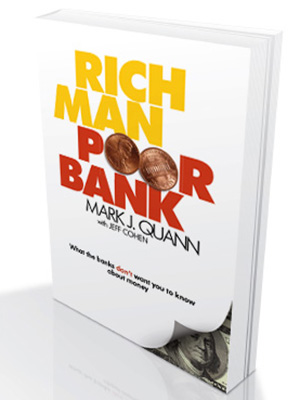Kuala Selangor Bank Scam #9: Zero Percent Auto Loans
Is a zero percent auto loan a good idea? Lets look at the numbers to find out.
The average car payment in America is just under $400 a month. If a household has 2 car payments, that is $800 a month invested into rapidly depreciating assets. If that same household spends another $200 a month on random stuff at Target, that is $1000 every month. If you then factor in the average payment toward household credit card debt of $500/month, that is $1500 a month to buy stuff. “Stuff” that loses its value very quickly.
But wait. You must also factor in taxes. You must first earn the money–then pay taxes–then spend the money with after-tax dollars. Yes, if the above scenario is you, you may need to earn $2000 a month–pay taxes of $500–then spend the $1,500 remaining. That is $2000 a month toward debt and taxes to buy stuff that you may not need. Camiri Ouch!
Many years ago, when I was a private investigator, I drove an old Honda Civic and refused to have a car payment. Life is good without car payments. I soon found myself with many “good reasons” to get into debt to buy a car, with the bankers providing the ammunition.
“Good Reason” #1 was: “You need to get good credit and making car payments helps you build your credit.” While it is true that making car payments can help you build credit, here is the question you should be asking:
“Why should I borrow money and go into debt–to make payments on a depreciating asset–to have a higher credit score, to “qualify” to borrow more money I cannot afford to borrow? Is this another scam to get me into debt?”
“Good reason” #2 was: “You can even borrow at zero percent interest.”
And I found myself thinking…“How can I possibly go wrong with a zero percent auto loan?
The truth is that borrowing, even at zero percent, is not good for your financial future.
Let’s do the math.
You may have heard that a new car loses 20% of its value once you drive it off the lot.
- Therefore, a $30,000 car loses $6,000 of value the second you drive it off the lot. I can’t think of a faster way to lose $6,000. But wait, that is not all. You must then factor in all the additional fees, taxes, registration costs, and the additional insurance costs to insure your new depreciating asset.
But let’s not forget Uncle Sam.
- If he did not take enough with all the registration costs, and dozens of taxes that drove up the cost of your new car, he also wants his share of your income before you buy your car. Depending on your tax-bracket, you may need to earn $40,000 to pay taxes of $10,000 to buy a $30,000 car that is worth $24,000. I cant think of a better way to lose $16,000. Double Ouch!
But just imagine if you repeat the above steps every 4 or 5 years. This is the reason why “the rich” buy used cars and pay cash. They understand that a rapidly depreciating asset is not good, even if borrowing at zero percent. Plus, cash flow is very important to becoming financially free, and car payments and taxes eat-up all your cash flow.
If you would like to become financially free, remember 2 simple rules:
Rule #1: You must keep your money away from the bank.
Rule #2: You must (legally) keep your money from the Government.
Additionally, do not invest into rapidly depreciating assets.
If you ever need to borrow a small amount to buy a car (perhaps $5,000), finance it from a credit union, not a bank. With interests rates at record lows, you can borrow at 2-3%, and never borrowing from a bank to do it. Come back again soon for Bank Scam #10, and please send this to your friends and family that love to drive nice new cars.


 Mark Quann is an entrepreneur with a belief in the liberating power of financial education and a campaign to slash the toxic influence of big banks and credit companies.
Mark Quann is an entrepreneur with a belief in the liberating power of financial education and a campaign to slash the toxic influence of big banks and credit companies. 





No comments yet.